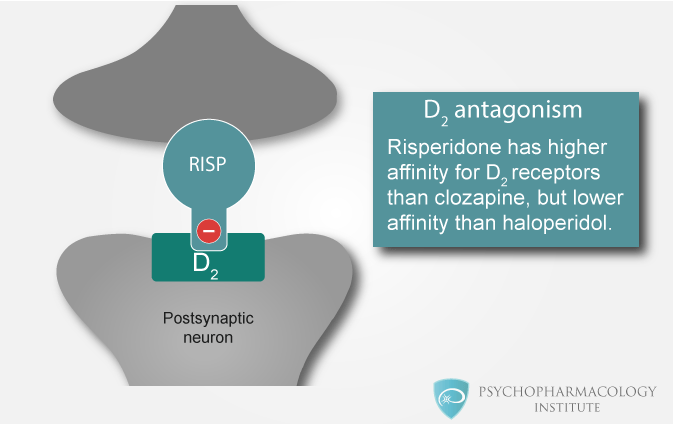 Mechanism of Action of Risperidone - Psychopharmacology Institute
Mechanism of Action of Risperidone - Psychopharmacology InstituteWarning: The NCBI website requires JavaScript to operate. Language: Silence Immediate effects of risperidodone on brain activity in healthy subjects: a comparison with subjects with first episode schizophrenia AbstractObjective To test the hypothesis that the administration of risperidone to healthy subjects produces reductions in metabolism in the frontal cortex similar to those produced by the administration of risperidone to patients who experience a first episode of schizophrenia. MethodsPositron emission tomography was used to measure changes in regional metabolism caused by a single dose of risperidone of 2 mg and placebo, administered under randomized, double-blind conditions, in 9 healthy subjects. The conjunction analysis was used to identify those brain sites where metabolism changes in healthy subjects coincided with similar changes in the metabolism observed in patients with schizophrenia. Results Compared to placebo, risperidone produced reductions in metabolism in the left side frontal cortex and right side-side frontal cortex in healthy subjects. The conjunction analysis revealed that these changes occurred in places similar to the exchange loci produced by risperidone in patients with schizophrenia. ConclusionBecause the reduction of metabolism in the median frontal cortex produced by risperidone is associated with the relief of positive symptoms in patients with schizophrenia, the observation of a reduction of metabolism in a similar site in healthy subjects holds the hypothesis that the antipsychotic effect of risperidone arises, at least in part, of a physiological effect that occurs both in patients with healthy schizophrenia. AbstractObjectiveVérifier l'hypothèse selon laquelle l'administration de rispéridone à des sujets en bonne santé provoque, dans le cortex frontal, des baisses du métabolisme semblables à celles que produit l'administration de rispéridone à des patients victimes d'unem prenie Méth On a utilisé la tomographie par émission de positrons pour mesurer les changements du métabolisme régional produits par une seule dos de 2 mg de rispéridone et par un placebo, administrée à neuf sujets en bonne santé dans des conditions randomisées et à double insu. On a eu recours à l'analyse de corrélation pour identifier les sites du cerveau où des changements du métabolisme chez les sujets en bonne santé ont coïncidé avec des changements semblables du métabolisme observés chez des patients atteints de schizophrénie. Résultats Comparativement au placebo, la rispéridone a produit des réductions du métabolisme dans le cortex front latéral gauche et le cortex front interne droit chez les sujets en bonne santé. L'analyse de corrélation a révélé que ces changements se produisaient à des endroits semblables à ceux des changements provoqués par la rispéridone administrée à des patients atteints de schizophrénie. Conclusion Comme il y a un lien entre la réduction du métabolisme dans le cortex front interne que produit la rispéridone et l'atténuation des symptômes positifs chez les patients atteints de schizophrénie, l'observation d'une baisse du métabolisme à un endroit semblable chez The fact that all established antipsychotic drugs block D2 dopamine receptors, which are abundant in the basal nodes, has led attention to basal nodes. However, functional imaging studies indicate that schizophrenia symptoms are associated with aberrant brain activity in a variety of brain sites, including frontal and temporary bark, as well as subcortical gray matter., therefore, it is essential to understand how antipsychotic drugs produce changes in function in various brain areas to fully understand antipsychotic action. Most of the studies that have examined the effect of sustained treatment with antipsychotic drugs in regional brain metabolism in schizophrenic subjects show that these drugs produce an increase in metabolism in basal ganglia. About half of the studies reviewed by Liddle also reported a decrease in frontal lobe metabolism during antipsychotic treatment. In trying to establish the relationship of these observed changes to the therapeutic effects of antipsychotic, it is relevant to determine whether these changes are only observed in patients with psychosis or also in healthy individuals. No studies have been conducted on the effects of sustained treatment with antipsychotic drugs in regional brain activity in healthy subjects, although several studies have examined the effects of a single dose. Bartlett et al found that 5 mg of haloperidol produced widespread reduction in cortical metabolism 12 hours later. However, in a later study, they did not find significant changes 2 hours after the administration of haloperidol. Thus, there is a partial consistency between findings in patients and healthy subjects, in which some studies report that antipsychotic drugs produce reduced cortical metabolism in both groups. Factors such as differences in the duration of treatment, doses and type of medication, and interval between medication and scanning account are likely to be at least some of the differences between the various findings reported in patients and healthy subjects. All published studies that have examined the effects of antipsychotic agents on regional brain activity in patients, or in healthy subjects, have used doses associated with the risk of akinesia or other extrapyramid side effects. Therefore, reported brain changes may be related to akinesia or other extrapyramid side effects instead of the therapeutic effect. We report a study in which we examine the effects of an antipsychotic drug on regional brain metabolism in healthy subjects using the same medication at the same dose and the same interval between drug administration and the scan used in a study of patients who were experiencing a first episode of schizophrenia. We use risperidone at a dose of 2 mg, because at this dose the risk of extrapyramid side effects is low. Postitron emission tomography (PET) studies indicate that the occupation of dopamine receptors after a dose of 2 mg is approximately 70%-80%, which is in the range associated with antipsychotic effect, but below the level associated with extrapyramid effects. In our previous study, not only were the effects of a single dose of risperidone examined, but also the effects of 6 weeks of sustained treatment. After 6 weeks of treatment, there were statistically significant reductions in the cerebral metabolism in the medial frontal cortex and the left side frontal cortex. The magnitude of the reduction of the medial frontal cortex was correlated with the change of positive symptoms during treatment, supporting the hypothesis that this change was related to the therapeutic effect. In addition, at exactly the same site of the medial front cortex, there was a statistically significant reduction immediately after the first dose (2 mg) of risperidone, suggesting that the changes associated with the therapeutic effect were discernible immediately after the first dose. Placebo-controlled trials indicate that the antipsychotic effect of neuroleptic drugs becomes statistically significant over a period of several weeks. While the non-significant reduction of psychotic symptoms is often discernible in patients who receive active medication in the first evaluation within the first week of treatment, the observed decrease in metabolism in the medial frontal cortex within the first 2 hours of the initial dose in our peer study occurred at a time when the degree of resolution of symptoms is expected to be minimal. These results suggest that the decrease in the metabolism observed after the initial dose of risperidone is unlikely to be a mere epiphenomene of symptoms relief. The reduction of the metabolism in the left lateral cortex after 6 weeks of treatment was not related to the change in the severity of the symptoms, and there was no significant reduction in the metabolism after the first dose in the most significant change site after 6 weeks of treatment. However, the changes in another part of the left lateral cortex were discernible after the first dose. In the accompaniment study, we also note that risperidone produced a reduction in metabolism in the ventral steriate, although this change was not statistically significant after a modified Bonferroni correction that allows an examination of the entire brain. A separate analysis, which was limited to restricted brain regions to test the specific hypothesis that acute psychosis involves overactivity of cortico-striato-thalamic circuits, revealed significant reductions in metabolism in the ventral steriate that were discernible after the first dose of risperidone and after 6 weeks of treatment. However, no significant metabolic changes were observed in the dorsal striate. In the light of the fact that risperidone produces minimal extrapyramid side effects in low doses, these observations raise the possibility that the increases in metabolism in the basal ganglia reported in studies of the effects of the typical antipsychotic drugs may reflect extrapyramid side effects, while, instead, antipsychotic action may involve a reduction in metabolism in the ventral steriate. Based on the observation in our peer study that the changes in the left side frontal cortex were not related to the change of symptom in schizophrenia subjects, we hypothesized that similar changes in this region would be seen in healthy subjects. The expectation of changes in the medial frontal lobe and in the ventral esteriate in healthy subjects is less clear. Therapeutic effects in patients may arise from a pharmacological process that also occurs in healthy subjects. Alternatively, the therapeutic effects could emerge from an effect that involves physiopathology of psychosis. To clarify this problem, we performed a conjunction analysis to identify sites where metabolism reductions in healthy subjects coincided with similar reductions in patients with schizophrenia after a single dose of risperidone. MethodsSujetos Eleven healthy subjects were recruited by advertising and analyzed for a current or past history of psychiatric illness using the structured clinical interview for diagnosis (SCID). The exclusion criteria for healthy subjects were as follows: · a history of psychotic disease, or current diagnosis of axis 1 according to DSM-IV criteria · a history of schizophrenia, illusory disorders or bipolar disorder in a relative of first degree · use of any medication or psychotropic drug during the previous 6 weeks (by history)· a current general medical disease (by history)The University of British Columbia approved the One subject retired from the study after the first scan and another was excluded due to the bad position in the PET camera. 9 topics were introduced in the analysis (5 men, 4 women). Eight of the 9 subjects were right. The age range (18–42 [average 28] yr) was similar to that of patients with schizophrenia examined in the peer study (18–36 [media 26.5] yr). Experimental design and image procedure Healthy procedures were administered either a placebo or 2 mg risperidone orally under randomized double-blind conditions on 2 occasions, separated by 1 week. On each occasion, 18F-fluorodeoxyglucosa (18F-FDG) was injected 90 minutes after the placebo or risperidone administration, and the scan began 40 minutes later. To ensure a standard state of mind during the 18F-FDG absorption period, subjects engaged in a continuous performance task of repeated stimulus. The digits were presented 1 at the same time in a visual visual display unit, and the subject was instructed to press a bar when 2 identical digits were presented consecutively. The images of the regional metabolism of glucose were obtained with a CTI 953B PET camera (CTI, Knoxville, TN) using 18F-FDG, according to a modified version of the procedure described by Hamacher et al. Septa of collision between planes was retracted to allow oblique photon paths to allow the reconstruction of images in 3 dimensions. The data were rebuilt in 31 adjoining axial slices covering an axial field of view of 10.8 cm. For each scan, 2 mCi of tracer was administered by slow injection for 1 minute through an antebrace cannula. In order to allow the test of the tracker's entry to the brain, the 18F-FDG concentration in the blood venous blood plasma was measured in 15 samples collected for a period of 120 minutes after the injection. The three-dimensional image data were collected in three 5-minute frames from 40 minutes after tracer injection. Correction for radiation absorption was made using data from a transmission scan obtained using a source of germanium rod 68. In our study of patients with schizophrenia, the experimental procedure was similar, except that placebo and risperidone were administered under conditions of a single blind in a fixed order of 3 hours away, with placebo being administered first. It would have been both impractical and unethical to have randomly assigned the placebo and risperidone administration order, as this would have implied the retention of treatment of patients with acute disease for a sufficient period to allow the return to the baseline after the administration of the first dose of risperidone or placebo. The difference in the randomization procedure between studies can reduce the power to detect similarities between the effects on healthy patients and subjects, but it is unlikely that it will introduce a spurative similarity. Image Analysis The image analysis was performed using the parametric Mapping statistical software (SPM96, Wellcome Department of Cognitive Neurology, University College London, London). For each scan, the three 5-minute frames lined up and averaged. The post-risperidone image was aligned to the post-placebo image, and an average image was compiled. The average image was spatially normalized to match the PET image template in SPM96, and the standardization parameters were applied to post-placebo and post-risperidone images. The images were smoothed using a 10 mm isotropic filter to improve the signal-to-noise ratio. After testing to ensure that there was no significant difference in global image intensity between post-placebo and post-risperidone images, the variation between scans in the average global image intensity was eliminated by proportional scale, using SPM96. For each voxel, the general linear model was used to estimate the average change in the scaled image intensity between the post-placebo image and the post-risperidone image. Correction for multiple comparisons was performed using a procedure based on the theory of random fields of Gauss. To identify those sites where there was a conjunction between the effects of a single dose of risperidone on healthy subjects with which in patients with schizophrenia, conjunction analysis was performed with SPM96. This procedure identifies the voxels in which there are supra-respective changes in metabolism in both groups and calculates the combined probability of the occurrence of these changes. The selected threshold was p Results In healthy subjects, there were extensive decreases in the metabolism in the left side frontal cortex and the right side frontal cortex after risperidone compared to placebo. Only the reduction of the left lateral cortex remained statistically significant after correcting several comparisons (). There was no evidence of changes in the basal nodes or left temporal lobe, even when a sensitive criterion of meaning (p Table 1The conjunction analysis revealed 2 clusters of voxels in which there were significant reductions in metabolism after risperidone in healthy subjects and patients with schizophrenia. One cluster was located in the left side front cortex; the other was in the medial front cortex (). These conjunctions were statistically significant after correcting for multiple comparisons (). Fig. 1: Areas of combination between reduced metabolism observed in both healthy subjects and in patients with schizophrenia after risperidone, 2 mg, in a 30 mm axial slice on the intercommisural plane. For coloured voxels, the articular probability is less than 0.05 under the null hypothesis. The color scale in the lower right corner shows the range of z values, which extends from 0 to 4.54. Table 2 The finding of a decrease in the frontal cortical metabolism in healthy subjects after a single dose of risperidone is largely consistent with the extensive reduction of cortical metabolism 12 hours after a dose of 5 mg haloperidol reported by Bartlett et al. The difference in the scope of the changes reported in the 2 studies could reflect differences in the type of antipsychotic drug administered, dose and time interval between drug administration and scanning. Healthy subjects in this study did not match for gender with patients with schizophrenia in the peer study. Because of the small sample, we cannot safely exclude the possibility of gender differences in the effects of risperidone in regional brain metabolism, especially because the correction of multiple comparisons required in the voxel-based image analysis to protect against type 1 error reduces the power to exclude type 2 errors (i.e., not detecting real differences). However, any gender difference would have tended to increase the differences between the healthy group and the patient group. The similarity between patients and healthy subjects in the effects of risperidone on the medial and lateral frontal cortex, on which we base our findings, cannot be explained by gender differences in these sites. The mechanism of action for which typical and atypical neuroleptic drugs cause a reduction in the frontal cortical metabolism is unknown. The induction of immediate early genes (IEGs) by typical and atypical neuroleptic agents has been extensively investigated, and it has been suggested that the induction of these genes is related to the therapeutic effects., More recently, Cochran et al have shown that the therapeutic doses of a single intraperitoneal injection of typical neuroleptics (haloperimbile) and atypical growths ( Changes in IEG expression were identified 45 minutes after exposure to drugs, while changes in local glucose metabolism were observed after 90 minutes. These findings are consistent with the course of time of our current study and suggest that the induction of IEG could contribute to the mechanism by which risperidone alters the brain function and induces the localized decreases observed in the metabolism of glucose. Effects in the medial frontal cortex In both patients with schizophrenia and healthy subjects, metabolism was reduced after risperidone in the right median frontal cortex. In patients with schizophrenia, sustained treatment with risperidone resulted in a decrease in the activity in the medial frontal cortex that is correlated with a decrease in the severity of the positive symptoms. This is consistent with the observation that medial frontal overactivity is associated with the symptoms of disorganization, and with hallucinations. In addition, the observation that a single dose of risperidodone produces an immediate decrease in metabolism in the medial frontal cortex in patients with schizophrenia, while the symptom resolution occurs on a time scale of several weeks, suggests that the decrease in metabolism precedes the change in symptoms. This is consistent with the hypothesis that the decrease in metabolism could play a causal role in the therapeutic effect. However, the fact that risperidone also produces a decrease in metabolism in the medial frontal cortex in healthy subjects indicates that this therapeutic effect is a consequence of a physiological effect of risperidone that occurs in healthy subjects, as well as in individuals with schizophrenia. The behavior data for the continuous performance task were only retrievable for 9 of 22 thematic sessions (5 placebo, 4 risperidone) due to a computer hard drive failure after the completion of the study. There were no significant effects of risperidodone between groups in the reaction time, in the errors in which the participants misidentified a stimulus as identical to the previous stimulus or in the errors where the participants did not recognize that an stimulus was identical to the previous stimulus. These results suggest that the reduction observed in cortical metabolism after a single dose of risperidone is unlikely to be the result of a decrease in performance or a lower participation in the task; however, this conclusion should be interpreted cautiously due to the reduction of the power associated with the smaller remaining sample. Effects on the lateral front cortexThe conjunction analysis revealed that risperidone produced metabolism reductions in the same location in the left side front cortex in healthy subjects and in patients with schizophrenia. In patients, the reduction of left frontal metabolism was not related to the change in the severity of symptoms. Therefore, this study did not provide evidence that the reduction of metabolism in the lateral frontal cortex produced by risperidone is related to its antipsychotic effect. What could be the expected effects of the reduced side frontal activity? The lateral front cortex is dedicated during a variety of cognitive tasks, especially work memory and executive processes. Blumer and Benson reported that lesions of the prefrontal dorsolateral cortex can produce a pseudodepression syndrome characterized by apathy and impoverished speech. In addition, the subactivity of the left side frontal cortex has been associated with negative schizophrenia symptoms. Therefore, it could be predicted that a reduction of the lateral front cortex activity would lead to a deterioration in the working memory and executive tasks, and perhaps to apathy and impoverished speech. Therefore, it is paradoxical that risperidone has been informed that it is effective to treat work memory deficits and negative symptoms in schizophrenia. However, it should be noted that studies that have shown these effects have compared risperidone to haloperidol. For example, in the Marder and Meibach study, several doses of risperidodo with haloperidol were compared to a dose of 20 mg a day. At that dose, haloperidol can produce marked akinesia. Therefore, it is possible that despite being beneficial compared to haloperidol, risperidone can produce subclinical hypokinesia even in small doses. This possibility is consistent with the observation that the most common psychological effect of risperidone in long-term treatment is astenia/latitude/grease increase. Alternatively, it may be that the reduction in the lateral frontal cortex metabolism produced by risperidone can serve a beneficial purpose in schizophrenia. For example, it is possible that a reduction in reference activity can actually facilitate the commitment related to the task of the frontal cortex. This speculation is backed by the evidence that risperidone treatment increases activation in the lateral frontal cortex in schizophrenia during the performance of a work memory task relative to a control condition. More recently, Mendrek et al reported that the treatment of patients with first episode schizophrenia using atypical antipsychotic agents (ya risperidone or olanzapina) resulted in an increase in lateral frontal lobe activity during a two-round task (where stimuli are presented sequentially, and the participant should respond when the current 0back level comparison) However, the inspection of changes relating to a repose condition revealed that the relative increase during the 2-back condition was actually the result of a reduction in the activity during the 0-back condition. Work memory performance also improved during treatment. This finding suggests that a pharmacological effect that leads to a reduction in the activity of the company in the lateral frontal lobe is associated with better performance in tasks that normally involve the lateral frontal cortex. It is plausible that the reduction in the lateral frontal metabolism, which we observe both in patients with schizophrenia and in healthy subjects during the performance of a continuous performance test without dismantling after a single dose of risperidone, may in fact reflect a reduction in the irrelevant frontal activity of tasks. In addition, such a reduction could improve performance in the executive tasks of patients. To clarify this problem, further research is needed on the effects of atypical antipsychotic drugs on the lateral front activity during a variety of different cognitive conditions. In contrast to the situation in the medial frontal cortex, where the reduction observed in metabolism appears to be associated with the antipsychotic effect of risperidone, it remains uncertain whether the reduction of the left frontal metabolism, which we have observed both in healthy subjects and in patients with schizophrenia, reflects a harmful or beneficial effect of the administration of risperidone. Basal ganglia In view of the risk of type 2 errors when the sample is small, the absence of significant effects in a specific brain region should be interpreted with caution. However, the absence of significant changes in the metabolism in the basal ganglia in healthy subjects, even when a criterion of indulgence is established for significance, suggests that the reduction in the respiratory metabolism observed in patients after a single dose of risperidone is an effect that is limited to patients with schizophrenia. This is consistent with the hypothesis that the reduction of ventral metabolism in patients reflects the relief of pathological overactivity, which is a manifestation of acute disease. On the other hand, the absence of significant changes in the metabolism in the dorsal striate, in healthy subjects examined in this study or in patients with schizophrenia, is consistent with the low propensity of risperidodone to cause extrapyramid side effects when given in low doses. Conclusion In summary, decreases were observed in the medial and lateral front activity in healthy subjects 90 minutes after a single oral dose of risperidodone. This finding complements our previous report of decreased activity in these same areas in a group of neuroleptic-naive patients with schizophrenia 90 minutes after their first oral dose of risperidone. Together, these two studies suggest that the reductions observed in the frontal medial and lateral frontal activity are the direct effects of risperidone and not an epiphenomer of symptoms reduction. This ability to induce reduction of brain metabolism can be the mechanism by which risperidone relieves symptoms of psychosis. Acknowledgements This study was supported by a Fellowship of the Norma Calder Foundation. We appreciate the assistance of the technical staff of the TRIUMF PET program. The TRIUMF PET program receives funding from Canadian Institutes of Health Research and the Canadian National Research Council. Competing interests: Nothing was declared for Dr. Ngan and Dr. Ruth. Dr. Yatham is at Janssen's advisory board and has received speaker charges from them. Dr. Lane was employed by Janssen after the completion of this manuscript and her doctor Liddle has received a speaker's fee from AstraZeneca and a quota of meeting chairman for Eli Lilly. Correspondence to: Dr. Peter F. Liddle, Division of Psychiatry, University of Nottingham, Queens Medical Centre, Nottingham NG7 2UH, UK; fax 0115 970-9495; Submitted Oct. 25, 2002; Revised May 13, 2003; Accepted May 21, 2003ReferencesFormats:Share , 8600 Rockville Pike, Bethesda MD, 20894 USA
Main menuConditions Healthy Tools Explore every day HealthRisperdone (Risperdal)Risperdone (Risperdal) Reviews Tips for Good Reviews REVIEW Could you recommend this drug? (required)How effective was this medicine in treating your condition? How easy was it to take this drug? (required) Did you have side effects while using this medication? (required)Reason for taking Risperidone (Risperdal)Share your experience with Risperidone (Risperdal) (required)Terms of service (required)Closed for Bipolar Disorder Report I took 2 mg and 1 mg for 11 years. I just got out six months ago. I forgot to say, and your too important, very slowly! Risperdal's retreat is HELL! Damn it! And getting out too fast can cause late disorder. Doctors are taught and instructed by pharmaceutical companies to record people on their way to speed. They want it to be a shock, they want you drugged! It is also the quick retreat that can cause psychosis. A naturopata will say that it is recorded at 10 percent a week(s.) Doctors will make 50% every week! The most important thing is that you should explain how long a person has been on the drug! But they don't! Rated for Bipolar Disorder Report I had a psychotic post-partum serious. I was diagnosed with bipolar. I've been in a rasperdal for 11 years. I think this drug is great to get someone out of psychosis, in the short term! I should never have been on it for over a year or two. I won 43 pounds, around my waist, shoulders and neck. Completely disproportionate. I felt dumber than anyone I spoke to. I couldn't read, get out of my county, or understand half the conversations with people. I started having bath problems. No doctor can understand. I know I've developed a late disorder. It can affect any muscle! I have twigs, shreds, knees bounced, tremors. I can't express how much better I feel outside that drug. I felt my IQ was up 70 points. I can understand what people are saying, even sometimes finish their prayers now!! I weigh what I did 15 years ago! As healthier (medicated makes you want sugar and carbohydrates) I left the soda and the fast food. I move faster. I'm stronger! I have a vocabulary again. Medicine had changed my posture, and my walk.. I had 8 weeks of back pain coming out. But the pain went away at night and I can get up straight again! My bathing problem is definitely better. Rated for Schizophrenia Report This drug made me fool I started forgetting everything. I've lost good health acne and frowned skin, I've started to scare things and I don't have the ability to do anything that was dumb that I couldn't even talk or interact with pwople that I don't know doctors suggest the same medication or I get different the same way this medicine has been torn apart for Bipolar Report wouldn't recommend this to anyone unless you want no hours. The drug helped me overcome my psychosis induced by acute cannabis and Dr wanted to keep me in it longer in case he came back. The drug had horrible side effects. I was getting my feet when I was walking in the morning, I felt numb and emotionless. I also lost my ability to concentrate. I decided to leave the tablets myself and since then, I have been experiencing bad depression with moods changing in rapid succession, but I would rather deal with this than go back to this medication. I asked the doctor if they can give me antidepressants or lamotrigine but they won't, so now I'm dealing with raw emotions. Rated for Other Report Paedophilic disorder. I asked for chemical castration, but the psychiatrist insisted that mine was a thought-related disorder. He also believed that the reduction of testosterone would have no effect on sexual driving. He removed intrusive mental impulses and images, but also caused depression and suicidal thoughts, which went with sertraline. Eventually he stopped working completely after a little less than a year, resorted to taking hormonal drugs from the Internet. I'm doing much better, but it seems to have developed a growing tolerance and dependence on risperidone. Missing a dose hurts much more than I used to. He'll be recording soon. Rated for Bipolar Disorder Report I have been in risperidone for a couple of years for bipolar disorder. I started at 1 mg at night and 1 mg in the morning, but I quickly had to lower the dose of the morning because it made me too sleepy. The medication has been very useful for my bipolar disorder, it has it completely under control. So I keep taking it. But it has made me gain weight (probably about 70 pounds), and we had to lower my dose up to 5 at night because I was really crumbling my intellectual capacity - I had not read a book in like a year, although reading has been a great passion for me all my life, so much so I have an MFA in creative writing. So for me not being able to read for pleasure was a big problem. I've read again now that I'm only on dose 5, though. I also have very blunt emotions, I haven't cried in years, and I don't think I'd laugh too much. It's all worth it, but... I have to keep the bipolar under control. Rated for Other Report terribbleRated for Autism Report My son was prescribed this medication to help with autism behavior and was a terrible and terrifying experience. Behaviorals increased, dramatically increased weight, anger, agitation, breaking things, violence, portraying excessively and eventually trying to commit suicide. Once she was weaned of this medication and put things in Abilify they calmed down. Rated for Acute Psychosis Report So this drug was useful at the beginning of what was going on. First they put me in risperidone 3 years ago to control my anxiety. They put me up to 4 mg in the span of 3 months. About 1 year later I wanted to get out of this drug because I had won around 40 pounds, had no period, and the galactorreah. I decided to stop it and for that time I felt more like myself, but I had trouble treating my anger (retirement symptoms) They decided to put me in a sweater for 1 year that gradually decreased to the lowest dose. Now I'm in the form of a 0.5 mg pill but I'm very frustrated that I want to get out of it right now as soon as I can be able to think clearly. I have dirty thoughts in my brain, I feel I am unable to fully express what I feel, trying to act more shy in social groups, I still have galactorreah. Please give some tipsRated for Autism Report My son has autism. It's low-functioning, not verbal. Risperdal, he changed his life so much. He was very aggressive and unpredictable. Risperdal stopped his aggression and made him less angry. She progressed so much and started learning. He's so happy. Take a low dose and have no side effects. Rated for Dementia Report My father took this medication, prescribed by the doctor, for dementia and almost killed him. He couldn't sleep for two days and then he got numb, he didn't talk, he didn't react to us, it was like a "coma state." We only gave two pills, and that was enough to cause all those problems. We stopped him and never, ever again, will give him any of those strong antipsychotics: we love our father a lot. I don't understand how a doctor can prescribe a powerful poison like this to an older person. This makes me crazy! Be careful, it's a terrible drug, stay away from her! Rated for Bipolar Disorder Report My father took it for over 6 years... 8 mg per day. His mood swings and all the pshyciartic problems were under control during that time. ... but this medicine puts your kidneys at risk. ... my father developed CKD ....biopsy mentioned that he was induced by the medication. ...so don't take this medicine for longer. Rated for Attention deficit-hyperactivity disorder (ADHD) Report I take it at night (2 - 0.5 mg) " works very well. But I'm sleepy, so in 2-2.5hrs I want to go to sleep. So if you need to go to bed soon, take it. Get out of her in a month! Rated for Psychotic Depression Report after a visit to a psychiatric ward I was put on risperdal at first I was ok then I noticed some side effects such as akathisia low hunger foggy thinking, anxiety and fear of driving and going on long travel loss of focus unable to clean and concentrate on any chores thus I am unable to work because I cant concentrate innability to watch television. without emotion not to laugh or cry ive was in it for almost a year and there is no improvement. I want to ask the doctor to give you a retribution medication. Has anyone been through this and then improved? I just want to live a normal lifeCrivado for Another Report I had an application with my psychiatrist to review. He asked me if I could change my medicines while I felt bad about my current medicines. He recommended putting me in Respedidon. I agree. So I left Quetiapine and started taking Resperidone. Big mistake. After 1 week, I couldn't sleep, I couldn't move my mouth to talk, my mouth was numb, I was drooling, I couldn't connect with my family and friends, I had no appetite, literally vomited 3 times a day. Then I called my health nurse to see if I could go back to my old drugs, they refused, they told me I would have to wait 4 weeks. I couldn't wait, so I went online and asked my previous meds that I was in, for over 200 pounds. I lost my mind even more because of the lack of sleep and just couldn't sleep. I went online and asked for help sleeping melatonin. Overdose on that and ended up in the A.E. It's a horrible drug. It's not good for those with ADHD. I'll be back to Quetiapine. Quetiapine gave me my life back and has improved my quality of life. This medicine can work for some. Rated for Schizophrenia Report I was prescribed 2 mg of Risperdal to treat schizophrenia and a psychotic rupture. This was very effective and after 1-2 months it was reduced to 1 mg. I found the medication very effective at this dose of 1 mg and I want to decrease my medication to 0.5 mg once a day at night. I experience few side effects. A big sleeper than I was before and a little lazy, but I have coffee or counting up to 1 in my head and then do things. I wonder if there are other adults who are at 0.5 mg and found it successful for schizophrenia? I am a 55kg 150cm of age 30Classified for Another Risperdone Report 1mg tablets. Every time I took this, my body felt extremely fatigued and my mind cannot think. All I can do is sleep. Although it feels weird since my legs and arms feel like they're hooked. I'd wake up feeling tired and not wanting to do anything for not talking about getting up. I took them for a month. They changed me tomorrow night. The same affects. They didn't improve my quality of life. I don't understand why people take this. Cried for the Prescribed Acute Psychosis Report 1 mg Risperidone during the night and as necessary to handle acute psychosis during bipolar mania. He helped to reach the dream and the thoughts of slow racing - made me very sleepy. He observed a spleen to my speech and a brilliant walking style when he was in the medication. He also experienced a "bluid" effect with emotions and general mental fog. About A-ZDrugs A-Z Medications provides information about Everyday health drugs and our partners, as well as ratings of our members, all in one place. Cerner MultumTM provides data within some of the Basics tabs, Side Effects, Interactions and Dosage tabs. Information within the tabs Reviews and FAQs is patented to Health of All Days. You can browse A-Z medications for a specific prescription or over-the-counter medication or get medications based on your specific condition. This information is only for educational purposes, and is not intended to provide medical advice, treatment or diagnosis. Always remember to consult your doctor or health care provider before you begin, stop or alter a treatment or health care regime. Every effort has been made to ensure that the information provided on this page is accurate, up-to-date and complete, but not guaranteed to that effect. Information on drugs contained in this document may be time sensitive. The information on this page has been compiled to be used by health professionals and consumers in the United States and, therefore, neither the daily health nor its licensing order used outside the United States are appropriate, unless otherwise expressly stated. Neither daily health nor its licensors support drugs, diagnose patients or recommend therapy. The information on drugs above is an informative resource designed to help the health professionals who are licensed to care for their patients and/or serve consumers by seeing this service as a supplement, not a substitute, of the experience, skill, knowledge and judgment of health professionals. The absence of a warning for a particular drug or drug combination should not be interpreted to indicate that the drug or combination is safe, effective or appropriate for any patient. Neither daily health nor its licensor assumes any responsibility for any aspect of health administered with the help of the information provided. The information contained in this document is not intended to cover all possible uses, addresses, precautions, warnings, interactions with medicines, allergic reactions or adverse effects. If you have any questions about the medications you are taking, consult your doctor, nurse or pharmacist.

Risperdal 4mg — without a prescription online
What you need to know about Risperdal (risperidone)!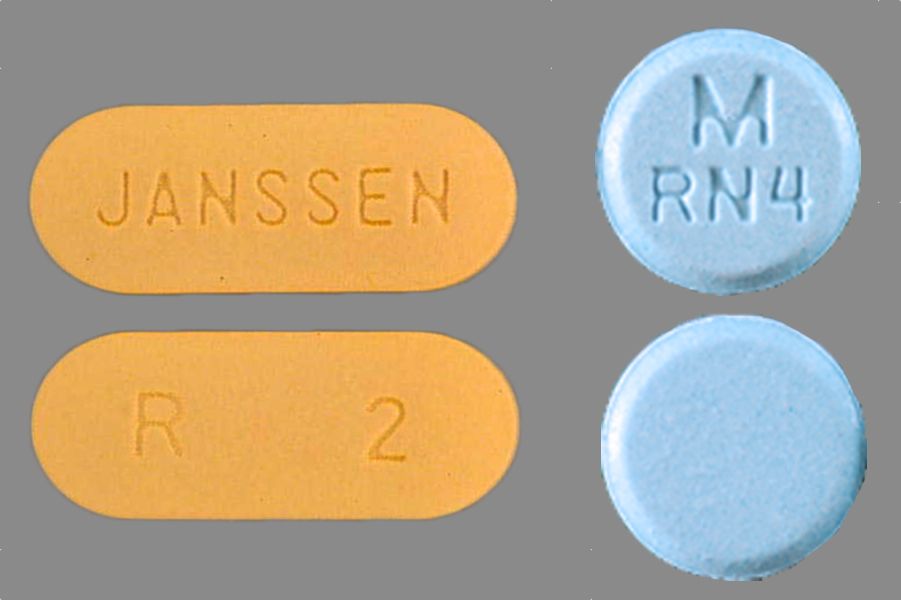
Risperdal (Risperidone): Dosage & Side Effects | Live Science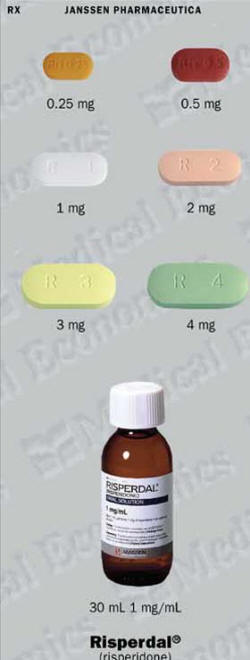
Risperdal (Risperidone) Patient Information | HealthyPlace
Mechanism of Action of Risperidone - Psychopharmacology Institute
Risperdal reviews, uses and side effects | shopinbrand
risperidone (Risperdal): uses, doses and side effects
Immediate and delayed effects of risperidone on cerebral metabolism in neuroleptic naïve schizophrenic patients: correlations with symptom change | Journal of Neurology, Neurosurgery & Psychiatry
What Is Risperdal Used For? Risperdal Children Side Effects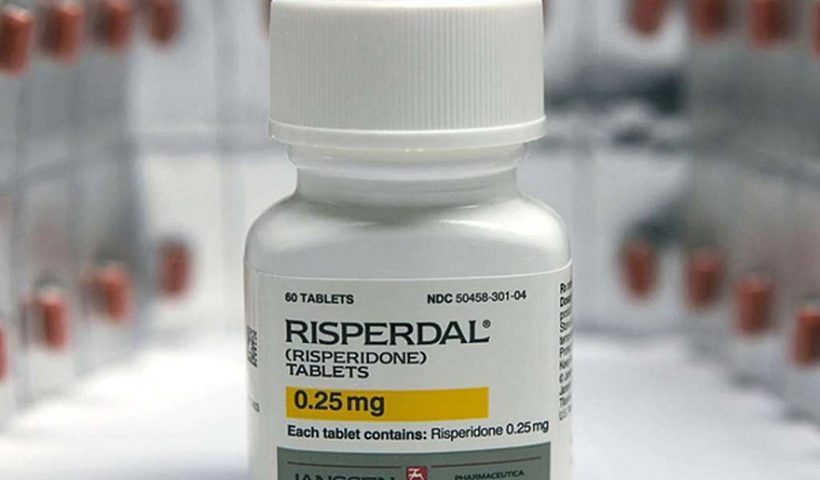
Risperdal reviews, uses and side effects | shopinbrand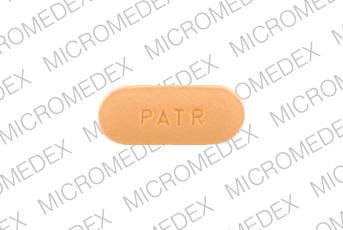
Risperidone: 7 things you should know - Drugs.com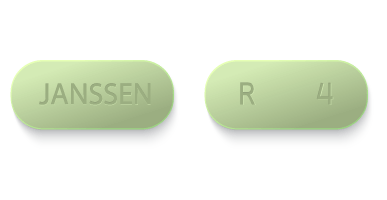
Risperdal | Uses, Dosages, Formulas & Drug Interactions
Risperidone - Side Effects, Uses, Dosage, Overdose, Pregnancy, Alcohol | RxWiki
risperidone (Risperdal): uses, doses and side effects
Risperidone Microspheres Formulation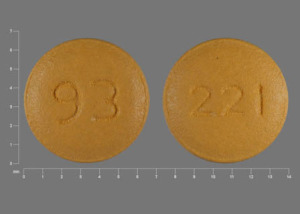
Risperidone: Uses, Dosage, Side Effects - Drugs.com
Does changing from a first generation antipsychotic (perphenazin) to a second generation antipsychotic (risperidone) alter brain activation and motor activity? A case report – topic of research paper in Clinical medicine. Download
Mechanism of Action of Risperidone - Psychopharmacology Institute
The Effect of Risperidone on Cognitive Functioning in a Sample of Asian Patients with Schizophrenia in Singapore
Using Risperidone in Children and Adolescents
Risperidone
Very Low-Dose Risperidone in First-Episode Psychosis: A Safe and Effective Way to Initiate Treatment
Risperidone - Vancouver Coastal Health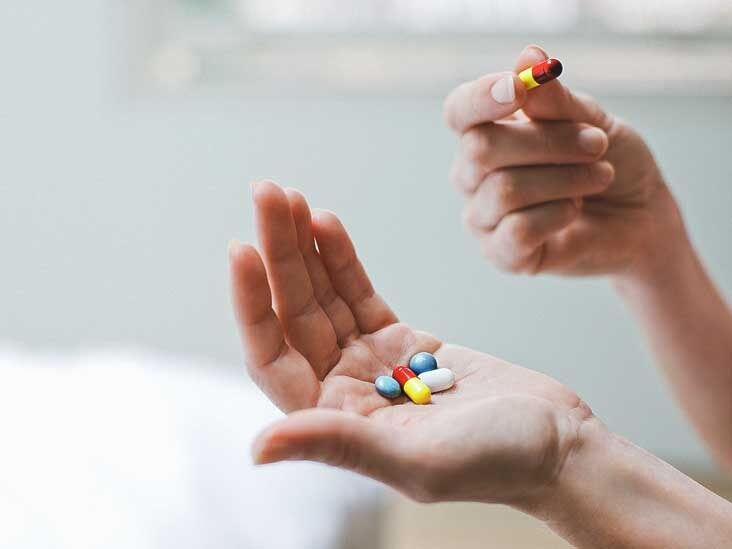
Drugs to Treat Bipolar Disorder
Risperdal (risperidone) for Bipolar Disorder, Bipolar Mania, and Schizophrenia: Uses, Dosage, Side Effects, Interactions, Warnings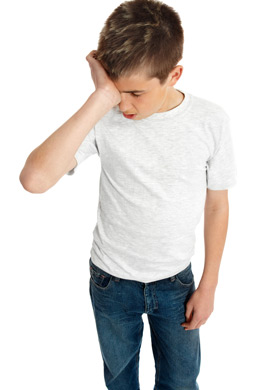
Risperidone use in children with autism carries heavy risks | Spectrum | Autism Research News
Download a handy QuILL - Choose Your Medication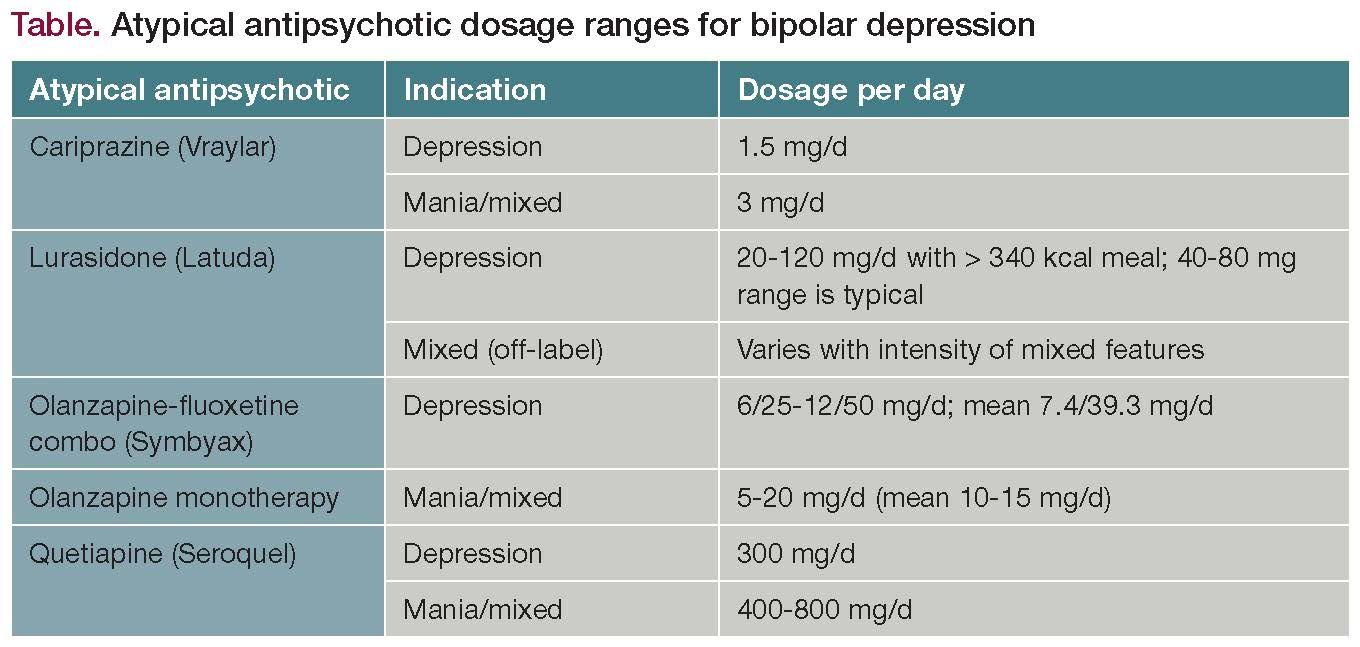
An Overview of Atypical Antipsychotics for Bipolar Depression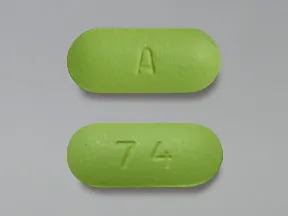
Risperidone Oral: Uses, Side Effects, Interactions, Pictures, Warnings & Dosing - WebMD
Risperidone (Risperdal) - Side Effects, Interactions, Uses, Dosage, Warnings | Everyday Health
How Aripiprazole's Promise for Treating Autism Fell Short | The Scientist Magazine®
PDF) Risperidone: A review of efficacy studies in adolescents with schizophrenia
When does risperdal start working, does risperidone work immediately – Cheapest pills, Free online prescription ‒ www.nephew.dk
Risperdal - Controversy, Black Box Warning & Legal Claims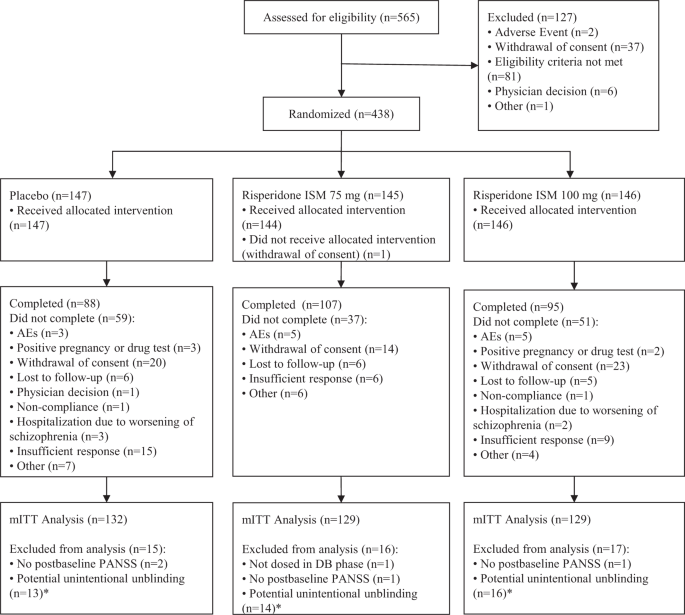
Efficacy and safety of once-monthly Risperidone ISM ® in schizophrenic patients with an acute exacerbation | npj Schizophrenia
APO-Risperidone Tablets - NPS MedicineWise
Very Low-Dose Risperidone in First-Episode Psychosis: A Safe and Effective Way to Initiate Treatment
How does risperdal work, risperdal how does it work – Pill shop – SLSRECIPES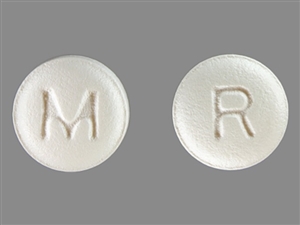
risperidone (oral) | Michigan Medicine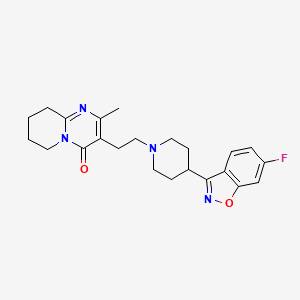
Risperidone | C23H27FN4O2 - PubChem
 Mechanism of Action of Risperidone - Psychopharmacology Institute
Mechanism of Action of Risperidone - Psychopharmacology Institute

































Posting Komentar untuk "does risperidone work immediately"